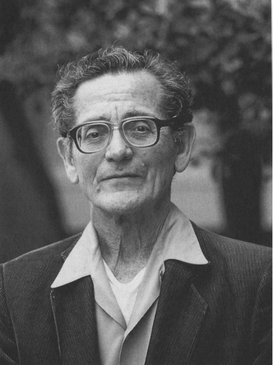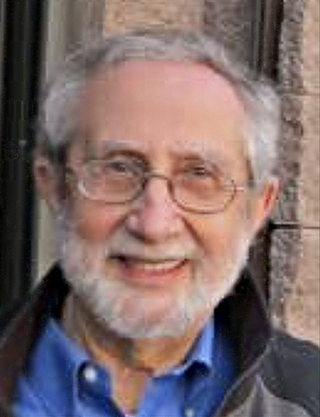Related Research Articles

Consciousness, at its simplest, is awareness of internal and external existence. However, its nature has led to millennia of analyses, explanations, and debate by philosophers, scientists, and theologians. Opinions differ about what exactly needs to be studied or even considered consciousness. In some explanations, it is synonymous with the mind, and at other times, an aspect of mind. In the past, it was one's "inner life", the world of introspection, of private thought, imagination and volition. Today, it often includes any kind of cognition, experience, feeling or perception. It may be awareness, awareness of awareness, metacognition, or self-awareness either continuously changing or not. The disparate range of research, notions and speculations raises a curiosity about whether the right questions are being asked.
In philosophy, the self is an individual's own being, knowledge, and values, and the relationship between these attributes.
Artificial consciousness, also known as machine consciousness, synthetic consciousness, or digital consciousness, is the consciousness hypothesized to be possible in artificial intelligence. It is also the corresponding field of study, which draws insights from philosophy of mind, philosophy of artificial intelligence, cognitive science and neuroscience. The same terminology can be used with the term "sentience" instead of "consciousness" when specifically designating phenomenal consciousness.

In neuroanatomy, the precuneus is the portion of the superior parietal lobule on the medial surface of each brain hemisphere. It is located in front of the cuneus. The precuneus is bounded in front by the marginal branch of the cingulate sulcus, at the rear by the parieto-occipital sulcus, and underneath by the subparietal sulcus. It is involved with episodic memory, visuospatial processing, reflections upon self, and aspects of consciousness.

In the philosophy of mind, the hard problem of consciousness is to explain why and how humans and other organisms have qualia, phenomenal consciousness, or subjective experience. It is contrasted with the "easy problems" of explaining why and how physical systems give a (healthy) human being the ability to discriminate, to integrate information, and to perform behavioral functions such as watching, listening, speaking, and so forth. The easy problems are amenable to functional explanation—that is, explanations that are mechanistic or behavioral—since each physical system can be explained purely by reference to the "structure and dynamics" that underpin the phenomenon.
Daniel Dennett's multiple drafts model of consciousness is a physicalist theory of consciousness based upon cognitivism, which views the mind in terms of information processing. The theory is described in depth in his book, Consciousness Explained, published in 1991. As the title states, the book proposes a high-level explanation of consciousness which is consistent with support for the possibility of strong AI.
The consciousness and binding problem is the problem of how objects, background, and abstract or emotional features are combined into a single experience.
Global workspace theory (GWT) is a framework for thinking about consciousness proposed by cognitive scientists Bernard Baars and Stan Franklin in the late 1980s. It was developed to qualitatively explain a large set of matched pairs of conscious and unconscious processes. GWT has been influential in modeling consciousness and higher-order cognition as emerging from competition and integrated flows of information across widespread, parallel neural processes.

Benjamin Libet was an American neuroscientist who was a pioneer in the field of human consciousness. Libet was a researcher in the physiology department of the University of California, San Francisco. In 2003, he was the first recipient of the Virtual Nobel Prize in Psychology from the University of Klagenfurt "for his pioneering achievements in the experimental investigation of consciousness, initiation of action, and free will".

Neural binding is the neuroscientific aspect of what is commonly known as the binding problem: the interdisciplinary difficulty of creating a comprehensive and verifiable model for the unity of consciousness. "Binding" refers to the integration of highly diverse neural information in the forming of one's cohesive experience. The neural binding hypothesis states that neural signals are paired through synchronized oscillations of neuronal activity that combine and recombine to allow for a wide variety of responses to context-dependent stimuli. These dynamic neural networks are thought to account for the flexibility and nuanced response of the brain to various situations. The coupling of these networks is transient, on the order of milliseconds, and allows for rapid activity.

"What Is It Like to Be a Bat?" is a paper by American philosopher Thomas Nagel, first published in The Philosophical Review in October 1974, and later in Nagel's Mortal Questions (1979). The paper presents several difficulties posed by consciousness, including the possible insolubility of the mind–body problem owing to "facts beyond the reach of human concepts", the limits of objectivity and reductionism, the "phenomenological features" of subjective experience, the limits of human imagination, and what it means to be a particular, conscious thing.

David Rosenthal is an American philosopher who has made significant contributions to the philosophy of mind, particularly in the area of consciousness and related topics. He is professor of philosophy at the Graduate Center of the City University of New York (CUNY). He was educated at the University of Chicago and then Princeton University. Rosenthal also has research interests in cognitive science, and is Coordinator of the CUNY Graduate Center's Interdisciplinary Concentration in Cognitive Science. And he has done work in philosophy of language, metaphysics, ancient philosophy, and 17th-century rationalism.

Animal consciousness, or animal awareness, is the quality or state of self-awareness within an animal, or of being aware of an external object or something within itself. In humans, consciousness has been defined as: sentience, awareness, subjectivity, qualia, the ability to experience or to feel, wakefulness, having a sense of selfhood, and the executive control system of the mind. Despite the difficulty in definition, many philosophers believe there is a broadly shared underlying intuition about what consciousness is.
Primary consciousness is a term the American biologist Gerald Edelman coined to describe the ability, found in humans and some animals, to integrate observed events with memory to create an awareness of the present and immediate past of the world around them. This form of consciousness is also sometimes called "sensory consciousness". Put another way, primary consciousness is the presence of various subjective sensory contents of consciousness such as sensations, perceptions, and mental images. For example, primary consciousness includes a person's experience of the blueness of the ocean, a bird's song, and the feeling of pain. Thus, primary consciousness refers to being mentally aware of things in the world in the present without any sense of past and future; it is composed of mental images bound to a time around the measurable present.

The neural correlates of consciousness (NCC) are the minimal set of neuronal events and mechanisms sufficient for the occurrence of the mental states to which they are related. Neuroscientists use empirical approaches to discover neural correlates of subjective phenomena; that is, neural changes which necessarily and regularly correlate with a specific experience. The set should be minimal because, under the materialist assumption that the brain is sufficient to give rise to any given conscious experience, the question is which of its components are necessary to produce it.
The sense of agency (SoA), or sense of control, is the subjective awareness of initiating, executing, and controlling one's own volitional actions in the world. It is the pre-reflective awareness or implicit sense that it is I who is executing bodily movement(s) or thinking thoughts. In non-pathological experience, the SoA is tightly integrated with one's "sense of ownership" (SoO), which is the pre-reflective awareness or implicit sense that one is the owner of an action, movement or thought. If someone else were to move your arm you would certainly have sensed that it were your arm that moved and thus a sense of ownership (SoO) for that movement. However, you would not have felt that you were the author of the movement; you would not have a sense of agency (SoA).
Externalism is a group of positions in the philosophy of mind which argues that the conscious mind is not only the result of what is going on inside the nervous system, but also what occurs or exists outside the subject. It is contrasted with internalism which holds that the mind emerges from neural activity alone. Externalism is a belief that the mind is not just the brain or functions of the brain.
Secondary consciousness is an individual's accessibility to their history and plans. The ability allows its possessors to go beyond the limits of the remembered present of primary consciousness. Primary consciousness can be defined as simple awareness that includes perception and emotion. As such, it is ascribed to most animals. By contrast, secondary consciousness depends on and includes such features as self-reflective awareness, abstract thinking, volition and metacognition. The term was coined by Gerald Edelman.
Higher-order theories of consciousness postulate that consciousness consists in perceptions or thoughts about first-order mental states. In particular, phenomenal consciousness is thought to be a higher-order representation of perceptual or quasi-perceptual contents, such as visual images.
The attention schema theory (AST) of consciousness is a neuroscientific and evolutionary theory of consciousness which was developed by neuroscientist Michael Graziano at Princeton University. It proposes that brains construct subjective awareness as a schematic model of the process of attention. The theory is a materialist theory of consciousness. It shares similarities with the illusionist ideas of philosophers like Daniel Dennett, Patricia Churchland, and Keith Frankish.
References
- ↑ Metzinger T. (2007). "Empirical perspectives from the self-model theory of subjectivity: A brief summary with examples". Models of Brain and Mind - Physical, Computational and Psychological Approaches. Progress in Brain Research. Vol. 168. pp. 215–45. doi:10.1016/S0079-6123(07)68018-2. ISBN 978-0-444-53050-9. PMID 18166398.
{{cite book}}:|journal=ignored (help) - ↑ Metzinger, T. (1993). Subjekt und Selbstmodell. Paderborn: Schoningh.
- 1 2 3 Being No One
- ↑ Being No one
- ↑ Vogeley K.; Kurthen M.; Falkai P.; Maier W. (September 1999). "Essential functions of the human self model are implemented in the prefrontal cortex". Conscious Cogn. 8 (3): 343–63. doi:10.1006/ccog.1999.0394. PMID 10487788. S2CID 29279495.
- ↑ Ben Shalom D (September 2000). "Developmental depersonalization: the prefrontal cortex and self-functions in autism". Conscious Cogn. 9 (3): 457–60. doi:10.1006/ccog.2000.0453. PMID 10993669. S2CID 54329542.